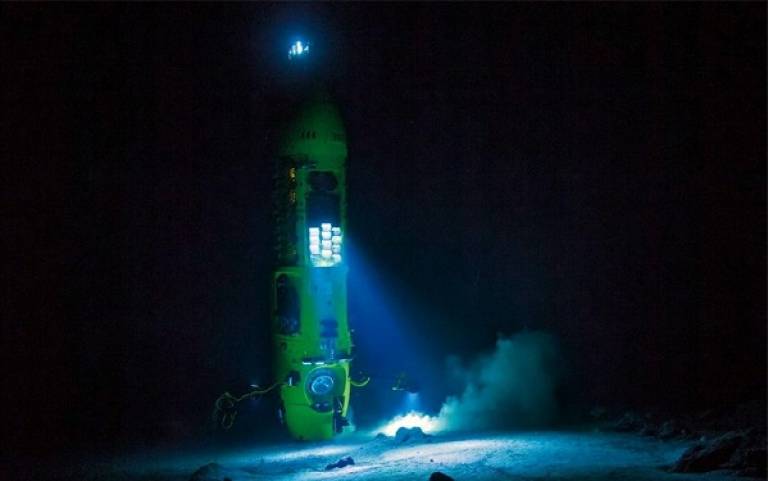Physical Address
304 North Cardinal St.
Dorchester Center, MA 02124
Physical Address
304 North Cardinal St.
Dorchester Center, MA 02124

Contents [hide]
The deepest part of the ocean is known as the Challenger Deep, located beneath the western Pacific Ocean in the southern end of the Mariana Trench. This trench runs several hundred kilometers southwest of the U.S. territorial island of Guam. The Challenger Deep plunges to a depth of approximately 10,935 meters (35,876 feet), making it the lowest known point on Earth. It was named after the HMS Challenger, the ship whose crew first measured the depths of the trench back in 1875.
Only three individuals have ever reached the Challenger Deep, with the first successful descent taking place 59 years ago in 1965. Navy Lt. Don Walsh and explorer Jacques Piccard made history by descending to this extreme depth in the Trieste, a deep-diving research submersible. The vessel was specially designed with 5-inch-thick steel walls to withstand the immense pressure at such depths, which amounts to eight tons per square inch, equivalent to the weight of 2,365 pounds on a person’s fingernail.
On their historic journey, Walsh and Piccard spent five hours navigating the 6.78-mile descent to the ocean’s deepest point. Their observations of the seafloor revealed a flatfish, indicating the presence of bottom-dwelling life forms and suggesting the availability of oxygen and food sources at such extreme depths.
Despite the immense pressure and darkness, the Challenger Deep is not devoid of life. Various expeditions have documented the existence of unique organisms thriving in this harsh environment. From large creatures like flatfish and shrimp to microscopic organisms such as monothalamea, the trench hosts a diverse array of life forms adapted to survive in the extreme conditions.
Researchers have also discovered new species of fish and other marine life forms during expeditions to the Mariana Trench, shedding light on the biodiversity present in the ocean’s deepest recesses.
While the Mariana Trench remains a fascinating area for scientific exploration, it is not immune to human impact. Recent studies have revealed high concentrations of pollutants such as PCBs and microplastics in organisms collected from the trench. These findings underscore the far-reaching effects of human activities on even the most remote and inaccessible parts of the ocean.
Efforts to preserve the integrity of the Mariana Trench, including its unique ecosystems and biodiversity, are essential to ensure that this natural wonder remains relatively untouched by human activities.
The Mariana Trench is a result of the subduction of the Pacific plate beneath the Mariana Plate, creating a deep trench in the ocean floor. This subduction process leads to the formation of the Mariana Islands and the arc of volcanic activity in the region. The trench itself represents the deepest part of this subduction system, with the Challenger Deep marking the lowest point in the Earth’s crust.
Over the years, numerous research expeditions have been conducted to study the geology, biology, and oceanography of the Mariana Trench. These efforts have provided valuable insights into the processes shaping the Earth’s crust, as well as the unique ecosystems that exist in the deep-sea environment.
Technological advancements, such as deep-sea submersibles and remotely operated vehicles, have enabled scientists to explore the depths of the Mariana Trench and uncover its hidden secrets. From mapping the seafloor to studying microbial life forms, ongoing research continues to expand our understanding of this enigmatic underwater realm.
Given the fragile nature of deep-sea ecosystems and the potential threats posed by human activities, conservation efforts are crucial to safeguard the Mariana Trench and its inhabitants. Designating marine protected areas and implementing sustainable management practices are essential steps in preserving this unique marine environment for future generations.
By raising awareness about the importance of ocean conservation and promoting responsible stewardship of marine resources, we can ensure that the wonders of the Mariana Trench remain intact for years to come.